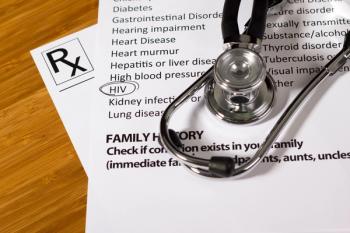
Wearing CGMs Can Help Student Pharmacists Improve Counseling Ability
Student pharmacists who wore a continuous glucose monitor had a higher average counseling score during an encounter with a patient and a higher overall confidence score.
Gaining hands-on experience with continuous glucose monitors (CGM) by wearing a device can help student pharmacists improve their counseling ability and give them more confidence, new research published in the journal Patient Education and Counseling found.1 The authors said the findings support incorporating a hands-on experience into pharmacy education so that students are prepared to counsel on new medical devices.
Since CGM devices came onto the market, they have quickly become the standard of care for patients with diabetes. Approximately 40% to 50% of people with type 1 diabetes use a CGM and recent data has supported their use in patients with type 2 diabetes.2 Research has shown that CGMs lead to significant improvements in glycemic control, including reductions in HbA1c levels, average blood glucose levels, and hypoglycemic events.3
READ MORE:
“Due to the great impact that CGM can have on patient outcomes, it is imperative that healthcare students are prepared to counsel patients on the proper use of these devices, especially in the community pharmacy setting where the majority of patients receive their CGM supplies,” the authors wrote. “However, literature on CGM education for healthcare students is lacking with only two published studies to date, one with pharmacy students and the other with medical and dental students.”
A team of investigators from Notre Dame of Maryland University and High Point University Fred Wilson School of Pharmacy conducted a study to examine the impact of wearing a CGM on student pharmacist counseling ability, knowledge, confidence, and empathy. For the study, student pharmacists from 2 institutions were randomly assigned to wear a CGM device or not to wear a device. The study was done throughout the same weeks during CGM laboratory sessions in each school’s patient care laboratory course.
During week 1 of the laboratory sessions, each group took an electronic survey assessing their CGM knowledge, confidence in performing CGM-related activities, and empathy toward people using CGM. Both groups also completed a post survey before they counseled a patient about CGM. The primary study outcome was student performance score on counseling a patient on a new prescription for a CGM device. Secondary study outcomes included change in knowledge, confidence, and empathy before and after the hands-on CGM experience.
Of the 86 students enrolled in the CGM laboratory across both schools, 63 agreed to participate in the study. Of those, 68% had prior experience in the community pharmacy setting, 32% in the inpatient setting, 21% never worked in a pharmacy setting, and 14% had prior experience with CGM. Baseline results from the survey of confidence, knowledge, and empathy were similar between the groups.
The study found that the group who wore a CGM had a higher average counseling score during the encounter with a patient and a higher overall confidence score. There was a statistically significant positive correlation between average confidence and average empathy, and empathy and counseling performance in both groups. A correlation between knowledge and counseling score was seen for the group who wore a CGM, but was not seen in the group who did not wear a device.
“The opportunity to wear a CGM device resulted in higher student performance on CGM counseling as well as a larger increase in CGM-related confidence after the intervention,” the author concluded. “This study supports the use of resources to provide students with this hands-on experience. Future studies should adapt this model for other health professional curricula and consider how programs like this may impact a graduate’s propensity to provide these services in practice.”
READ MORE:
Are you ready to elevate your pharmacy practice? Sign up today for our
References
1. Folz HN, Lee S, Sherrill CH. Student pharmacist counseling performance after hands-on continuous glucose monitoring education: A multi-institutional pragmatic randomized study. Patient Educ Couns. 2024 Nov 29;131:108578. doi: 10.1016/j.pec.2024.108578. Epub ahead of print. PMID: 39642631.
2. Mayberry LS, Guy C, Hendrickson CD, et al. Rates and Correlates of Uptake of Continuous Glucose Monitors Among Adults with Type 2 Diabetes in Primary Care and Endocrinology Settings. J GEN INTERN MED. 38, 2546–2552 (2023). https://doi.org/10.1007/s11606-023-08222-3
3. Manov AE, Chauhan S, Dhillon G, et al. The Effectiveness of Continuous Glucose Monitoring Devices in Managing Uncontrolled Diabetes Mellitus: A Retrospective Study. Cureus. 2023 Jul 27;15(7):e42545. doi: 10.7759/cureus.42545. PMID: 37637581; PMCID: PMC10460137.
Newsletter
Pharmacy practice is always changing. Stay ahead of the curve with the Drug Topics newsletter and get the latest drug information, industry trends, and patient care tips.















































































































